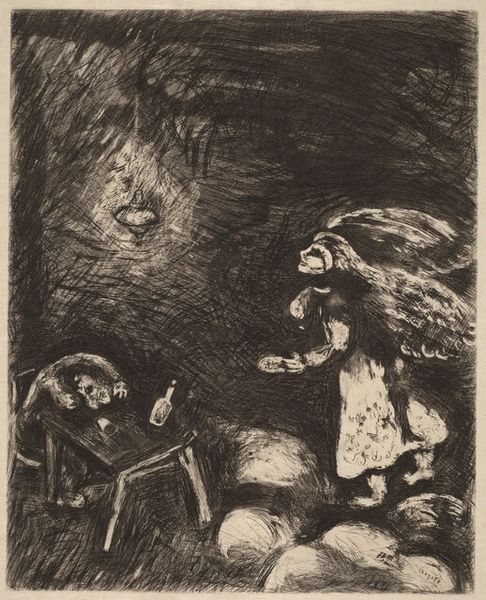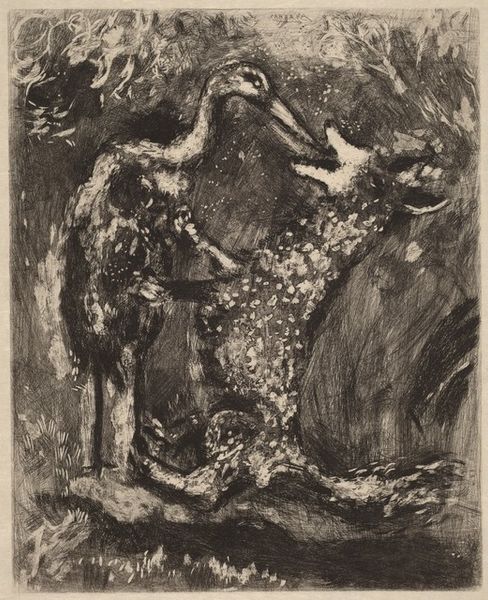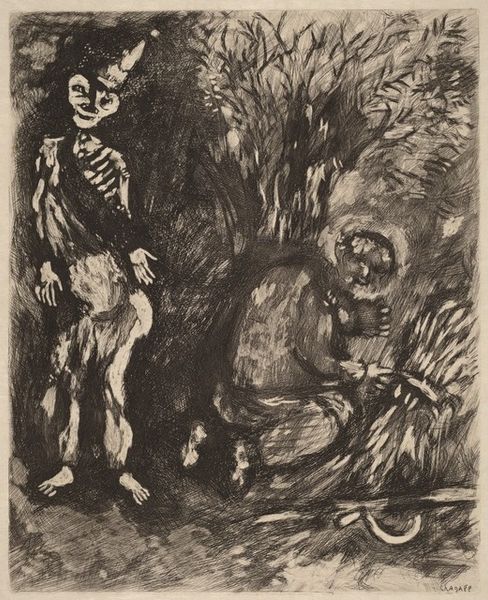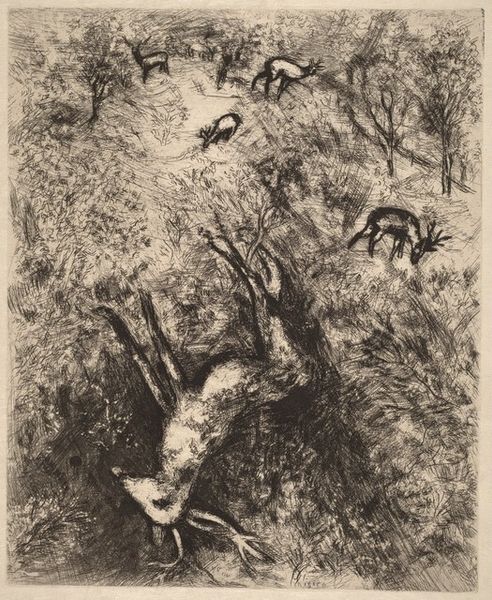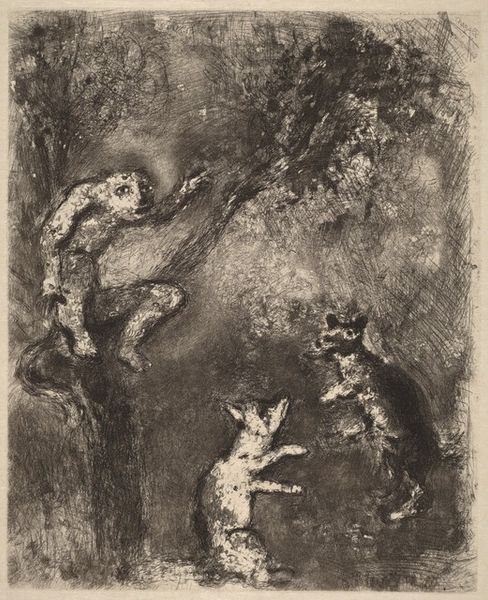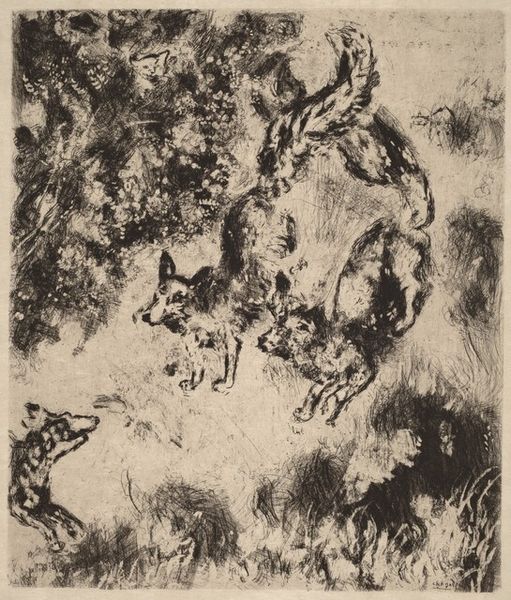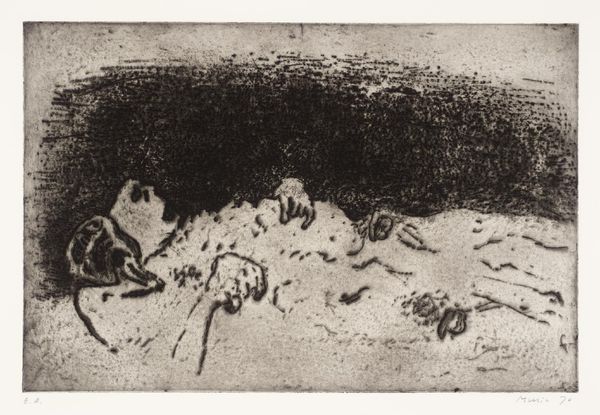
The Heifer, the She-Goat, and the Lamb, in Partnership with the Lion 1927 - 1930
0:00
0:00
Copyright: National Gallery of Art: CC0 1.0
Editor: This is "The Heifer, the She-Goat, and the Lamb, in Partnership with the Lion," an etching by Marc Chagall, created sometime between 1927 and 1930. The somber monochromatic palette really emphasizes the dramatic tension here; the lion definitely dominates the composition. What do you see in this piece, especially in its animal imagery? Curator: The animals here, rendered in such stark contrast, evoke deep, almost primal symbolic layers. The lion, of course, traditionally represents power, even dominance, but also pride. He holds the lamb, traditionally a symbol of innocence, almost a visual oxymoron when considered together. Does this contrast remind you of any historical power dynamics or stories? Editor: Maybe like a powerful country exploiting a smaller one, or a predator/prey relationship where one takes advantage of the other? The title mentions a 'partnership,' but this scene looks anything but cooperative. Curator: Precisely! Chagall is invoking layers of irony. This "partnership," this seemingly cooperative venture, belies a fundamental imbalance. Look closer: what do you make of the seemingly random placement of other animals, their distance? Editor: They appear removed, perhaps oblivious, almost as if these unfortunate events are occurring in isolation. Do you think this has any wider implications, perhaps about society, or even history? Curator: This etching becomes a broader reflection on perceived fairness, inherent conflict, and maybe a societal blind spot for those being exploited. It begs the question of complicity versus active participation in power imbalances. This reminds me of… Editor: Oh, this connection to how symbolism carries social narratives over time has provided so much to consider about Chagall’s views! Curator: Agreed, viewing this print as both art and social critique really broadened my own awareness.
Comments
No comments
Be the first to comment and join the conversation on the ultimate creative platform.
